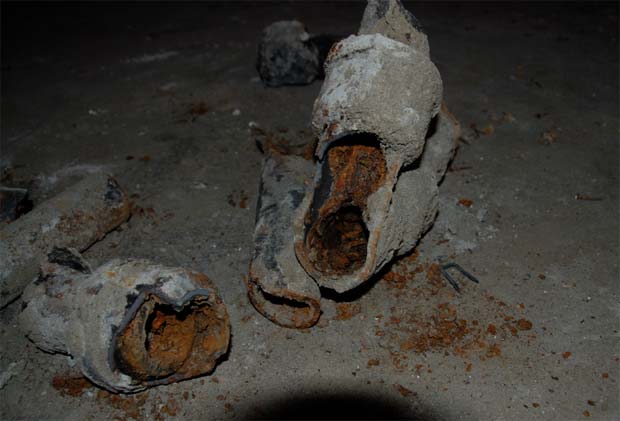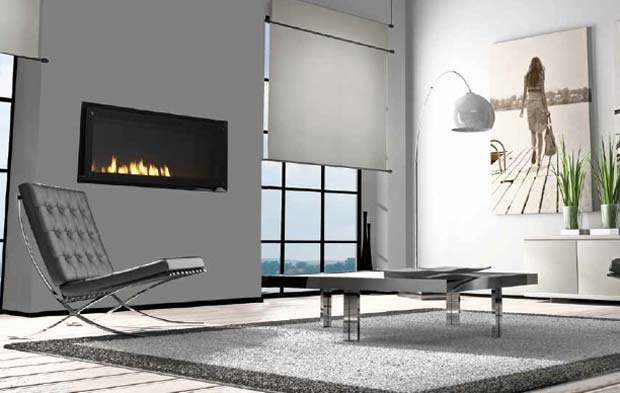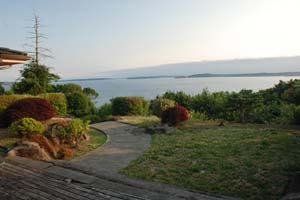Heating and Cooling Plans Take a U-Turn

Turns out we’re actually not going to Drill Baby Drill.
A couple of weeks ago, in the midst of wrestling with some difficult cost-cutting decisions, Build and I met with an energy consultant to discuss the viability of equipping the new house with technologies like geothermal and radiant heat. My hope was to use both, in an attempt to be as green and comfortable as possible.
I had been told by a couple of local drilling companies that I probably only needed three 300-foot holes drilled, at $5000 apiece, to generate enough load to both heat and cool the house. Although $15,000 is a lot of money, it seemed like a good investment and the right thing to do, from an environmental standpoint.
To my dismay, however, the consultant was pretty sure I needed five holes, considering how many windows I have, and that the total drilling bill would be more like $30,000. If I was under budget or close to it, maybe I would have still considered it, but since I’m still substantially above where I want to be, it made sense to say goodbye to geothermal heat, unfortunately. I get the feeling this happens to a lot of people; swearing to use as many clean technologies as possible and then shuttering many of them along the way as costs begin to spiral. I look forward to the day when the cost of building green is not significant enough to even notice. That being said, building green is not an all or nothing proposition. Just because I’m not plunking down $30,000 for a fancy geothermal system doesn’t mean the house won’t be energy-efficient in many other ways.
The next decision revolved around radiant vs. forced air HVAC. Going into this meeting, I didn’t even think forced air would be on the table, as many people have told me that radiant heat is far superior. The problem, however, with radiant is that there is no built-in cooling. There is a “comfort system” they can build these days which runs cold water through the radiant pipes but it’s not really capable of cooling the house by more than a few degrees. Given the fact that so much of the west side of the house is glass and will transfer a lot of heat from the sun, it seemed necessary to have a full-fledged air conditioning system for those (admittedly rare) sweltering Seattle summer days.
Could we try and design a house which used breezes off Puget Sound to cool the house in the summer? Sure, but if it didn’t work so well, retrofitting for air conditioning would be difficult and expensive. Given that, the project now required full ductwork for a forced air A/C system. And given that, we were now talking about two totally separate systems for HVAC: radiant pipes for heat and forced air for A/C. Expensive, and arguably overkill.
On top of these complications, the energy consultant also warned me that radiant heat is not nearly as fast as forced air at changing the temperature of a house or a zone in the house. Radiant can take 2-3 hours to do its job while forced air is more like a matter of minutes. While this usually isn’t a big deal because most people keep their house at a relatively constant temperature, my house may present a difficult challenge because of all the west-facing glass (this is becoming a theme, I am noticing): on a cold, clear winter morning, it may be 30 degrees outside and the heating system would probably be cranking. But as soon as the sun hits the west glass in the afternoon, that could warm the house up naturally quite a bit. At that point, the heating system needs to ease up a bit. And then when the sun goes down, it needs to crank back up. Radiant heat is simply not as good as forced air for quickly adjusting to these sorts of things. And on top of that, radiant heat does not work perfectly under wood floors. It’s generally best under concrete, slate, or tile.
So anyway, with all of that to consider, I made the call to move forward with a natural gas powered forced air heating and cooling system. I may do a mini radiant heating pad to warm up the master bathroom tile, but that’s it. On the downside, it’s not as forward-thinking of an HVAC system as I was hoping for, but on the upside, it should be more comfortable, and it saves me probably $40k-$50k in total.




